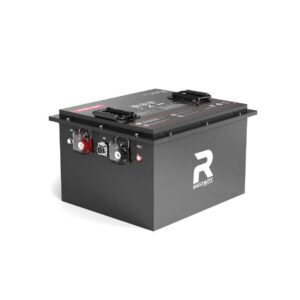50Ah RV Battery Guide: Technical Specifications, Installation, and FAQs
Modern RVs increasingly rely on efficient power solutions, and the 50Ah lithium battery has become a game-changer for mobile energy needs. These batteries balance compact size with robust performance, making them ideal for powering everything from essential lighting systems to high-demand appliances like microwaves and air conditioning units during off-grid adventures.
How Do LiFePO4 Batteries Outperform Traditional Lead-Acid for RVs?
LiFePO4 batteries provide 4x longer lifespan (15+ years), 50% weight reduction, and 95% usable capacity compared to lead-acid. They charge 3x faster, operate in -20°C to 60°C temperatures, and maintain consistent voltage without sulfation. Redway’s 12V50Ah model includes built-in battery management systems (BMS) for overcharge/over-discharge protection.
The thermal stability of LiFePO4 chemistry prevents thermal runaway risks common in other lithium-ion variants, making them safer for enclosed RV compartments. Unlike lead-acid batteries that lose capacity in cold weather, advanced models feature self-heating components that maintain charging efficiency down to -20°C. RV owners report 30% longer runtime between charges due to the flat discharge curve that keeps devices operational at lower charge states. For example, a 50Ah LiFePO4 battery can reliably power a 12V RV refrigerator for 18-24 hours compared to just 8-10 hours with equivalent lead-acid models.

What Are the Key Specifications to Evaluate in a 50Ah RV Battery?
Critical specs include:
- Cycle life: 4,000 cycles at 100% DoD (LiFePO4) vs 300 cycles (AGM)
- Peak current: 50A continuous discharge
- Energy density: 640Wh capacity
- Weight: 15.4 lbs (LiFePO4) vs 33 lbs (AGM)
- Temperature range: -4°F to 140°F operation
- IP65 waterproof rating
| Feature | LiFePO4 | AGM |
|---|---|---|
| Cycle Life | 4,000+ cycles | 300-500 cycles |
| Weight | 15.4 lbs | 33 lbs |
| Charge Time | 3-4 hours | 8-10 hours |
When comparing batteries, prioritize discharge efficiency at different temperatures. High-quality LiFePO4 units maintain 95% capacity at 0°C compared to AGM’s 60% performance drop. The IP rating becomes crucial for exterior-mounted batteries – IP65 protection ensures resistance against dust jets and low-pressure water streams during rainy travel conditions.
How to Properly Install and Maintain a 50Ah RV Battery?
Installation steps:
- Disconnect existing battery terminals
- Secure battery with vibration-resistant mounts
- Connect positive terminal first using 6AWG cables
- Apply anti-corrosion gel on terminals
Maintenance requires quarterly voltage checks (12.8V optimal), annual balancing, and storing at 50% charge when unused. Use compatible 14.6V lithium chargers.
Expert Views
“Modern 50Ah LiFePO4 batteries revolutionize RV power with 10-year warranties,” says Redway’s lead engineer. “Our latest models integrate Bluetooth monitoring and self-heating below freezing. Unlike lead-acid, they deliver full capacity even at 20% charge state – critical for boondocking reliability.”
Conclusion
50Ah RV batteries now offer unprecedented durability and efficiency through LiFePO4 technology. With proper selection and maintenance, these power solutions enable extended off-grid adventures while reducing long-term ownership costs by 60% compared to traditional options.
FAQ
- Q: Can I replace my RV’s lead-acid battery with a 50Ah LiFePO4 directly?
- A: Yes, but ensure your charger supports lithium profiles. LiFePO4 requires higher charging voltages (14.2-14.6V) than lead-acid.
- Q: How many solar panels needed to charge a 50Ah RV battery?
- A: A 200W solar array generates ~800Wh daily – sufficient for full recharge in 4-5 sun hours considering 85% system efficiency.
- Q: What’s the actual usable capacity of a 50Ah battery?
- A: LiFePO4 provides 50Ah (100% DoD), while AGM offers 25Ah (50% DoD). Always verify depth-of-discharge ratings.
